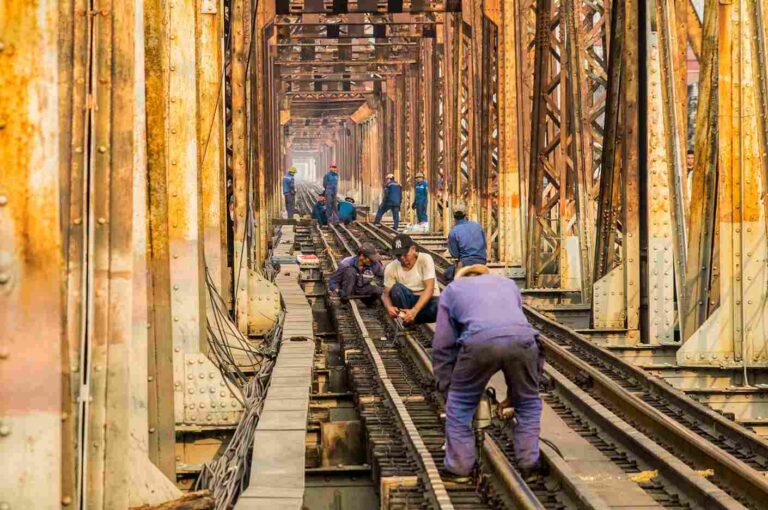The railroad construction sector is a dangerous place to work. Every year, hundreds of workers suffer serious injuries or even death due to hazardous conditions. It is essential that this industry takes steps to ensure the well-being of its workers. In this article, we will examine key aspects related to health and safety in railroad construction.
Railroad construction is a complex undertaking that demands meticulous attention to health and safety protocols. The railway industry is fraught with potential hazards, from heavy machinery operation to track laying and electrification processes. To mitigate these risks, rigorous safety measures are implemented. Workers undergo specialized training to understand and adhere to safety guidelines, emphasizing the proper use of personal protective equipment (PPE) and machinery. Regular safety briefings and inspections contribute to a proactive safety culture on construction sites. Emergency response protocols are established, ensuring swift and effective measures in case of accidents. The goal is to create an environment where every worker feels secure, knowing that their well-being is paramount. As the railroad industry evolves, a steadfast commitment to health and safety remains fundamental to the successful and responsible execution of construction projects.
3 Serious Railroad Accidents in the US
- 2016 Chester, PA: Two workers were killed when a tractor trailer hit them at the side of the tracks while they were working on maintenance.
- 2012 Goodwell, OK: Three workers died when a freight train slammed into their pickup truck as they drove along the tracks to inspect removed rail ties.
- 2001 Baltimore, MD: 11 people were killed and over 170 others injured due to an Amtrak train derailment caused by inadequate maintenance procedures and improper wiring installation.
Adherence to Regulations
The Occupational Safety and Health Administration (OSHA) has established numerous regulations regarding safety standards and protocols in the railway construction industry. All companies must comply with these regulations in order to protect their employees from potential dangers. Companies must also make sure they are offering appropriate training and education on safety protocols to their workers.
Personal Protective Equipment
Personal protective equipment (PPE) is an essential part of mitigating hazards in any workplace. Railroad construction sites often contain extremely hazardous environments, such as those involving heavy machinery or chemical exposure. To protect their employees from these dangers, companies should ensure employees have access to proper PPE such as hard hats, goggles, face masks, hearing protection, and other items as required by law.
Regular Risk Assessments
Risks can change quickly at a construction site due to varying conditions or newly-introduced hazards. To adequately address these risks, companies need to have regular risk assessments conducted at their sites by qualified personnel familiar with the various safety guidelines set forth by the OSHA and other agencies. This will allow them to identify which areas need additional attention before any serious incidents occur.
Proper Disposal of Hazardous Materials
Another major concern in railroad construction sites is the proper disposal of hazardous materials such as solvents, paints, fuels, lubricants, and other chemicals used during operations. A comprehensive waste management system should be established at each site in order to safely dispose of these materials without causing further environmental damage or public health risks.
Education and Training Programs
Adequate training is key when it comes to protecting workers from potential dangers at a railroad construction site. Companies should provide education programs focusing on safety issues specific to railway work – from basic operation procedures to advanced skills like first aid or crisis management procedures. This ensures employees can remain safe while carrying out their duties at a worksite. If you have been involved in a railroad accident, a railroad worker claims consultation can help you get compensation.
The railroad construction industry is an inherently dangerous yet important sector of the economy. By following these best practices, railroad construction sites can become much safer environments for their employees and help prevent any potential injuries or fatalities.
Apart from that, if you are interested to know about What to Do When You’re Injured in an Accident then visit our Daily Bites category.
